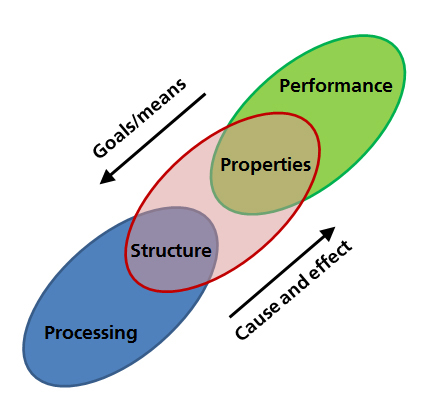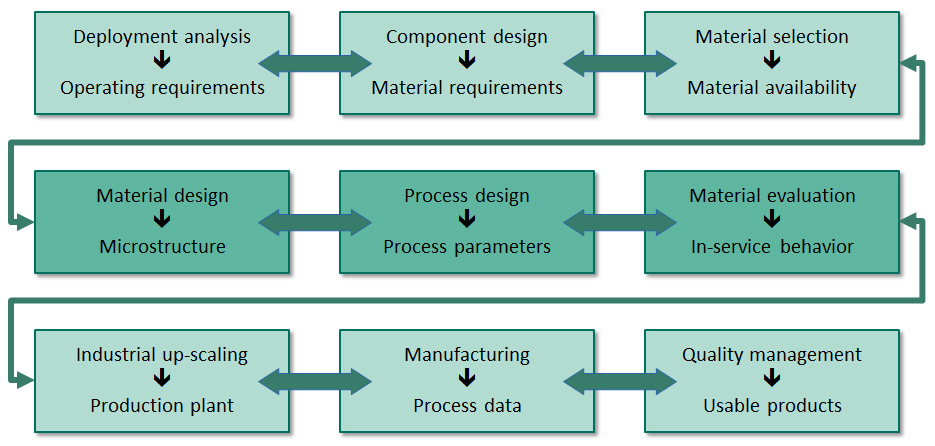In recent years, the integration of different simulation methods and experimental techniques for faster and more targeted material development has gained importance worldwide. This so-called Integrated Computational Materials Engineering (ICME) has already been widely used in the development of new metallic materials, but is rarely used in the field of ceramic materials. However, the key concepts of the ICME approach can be applied to ceramics without restriction. The focus is on elucidating the relationships between processing and (micro)structure (relationship 1), structure and properties (relationship 2), and properties and performance (relationship 3) of materials and the components made from them. This information is used for the targeted development of new products.
Integrated Computational Materials Engineering (ICME)

The HTL already has developed essential components for integrated, computer-aided material development (publication: Integrated Computational Ceramics Engineering). Concepts for multiscale simulation are available for all three of the aforementioned relationships. To investigate how the production process influences the structure (relationship 1), models are used on different scales: on the microscale, for example, the microstructure development during sintering is simulated depending on process parameters such as the temperature-time curve. Insights are derived from this about the conditions for achieving maximum homogeneity of the ceramics (publications: Modeling Inherently Homogeneous Sintering Processes and Simulation of Sintering). On the macroscale, FE models are available for debinding (publication: Optimization of Debinding Using Experiment-Based Computational Concepts) and sintering, based strictly on precise in-situ measurement data from the thermal processes. With these models, the respective thermal process is optimized on the computer so that the components achieve the desired final shape and density reliably and without cracks with minimal time and energy expenditure.
A microstructure-property simulation specifically developed for ceramics (publication: Using a novel microstructure generator to calculate macroscopic properties of multi-phase non-oxide ceramics in comparison to experiments) is available for relationship 2. It is suitable not only for pure ceramics but also for predicting the material properties of metal-ceramic composites (MMC) and ceramic fiber composites (CMC) (publication: 3D modelling of ceramic composites).
Regarding relationship 3, the computer-aided assessment of application properties, at the HTL, measured structures of surface or volume defects are evaluated using FE analyses for their impact on the probability of fracture.
The integration of multiscale simulation, systematic evaluation of databases, experimental procedures, and as needed, further methods based on the ICME concept provides the opportunity to advance material development significantly faster and with more targeted success compared to classical approaches. Even the coordinated and interconnected use of just a few components of the ICME concept can significantly improve the efficiency of material and component design tasks. Therefore, the HTL also offers "streamlined" variants of ICME for customer-specific product development.
Service Offering:
- Planning and execution of developments using the ICME (Integrated Computational Materials Engineering) approach
- Faster material, component, and process design through the use of ICME tools
 Fraunhofer ISC, Center for High Temperature Materials and Design HTL, Bayreuth
Fraunhofer ISC, Center for High Temperature Materials and Design HTL, Bayreuth